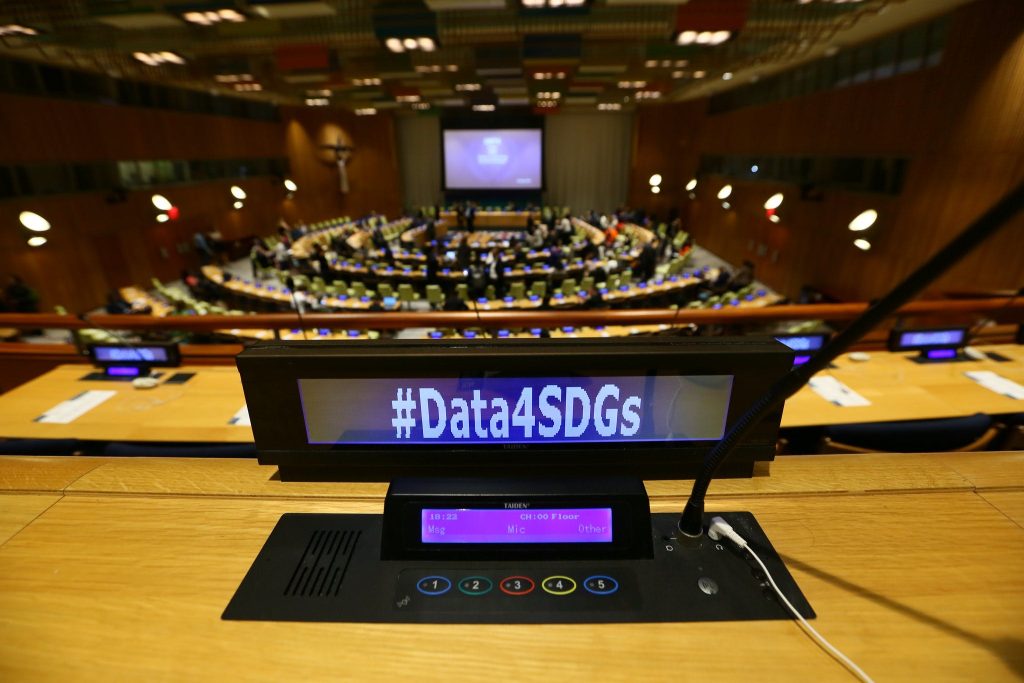Data has been the fashionable topic in sustainable development this year, but it’s always top of our minds at the Global Partnership for Sustainable Development Data. When we were created in 2015, we were tasked with a big job: to bring partners together and make sure that the opportunities of the data revolution were available to, and being used by, everyone working to achieve the Sustainable Development Goals (SDGs). It’s all about the relationships, so we’ve been working hard to build and strengthen the network necessary to make it happen. We now have 320 partners from governments (including our two newest country partners Costa Rica and the Dominican Republic), businesses, multilaterals, and civil society organizations. And 2018 was a big year for all of us.
Kicking off with Data Fest
We kicked off 2018 with our inaugural Data for Development Festival, a three-day gathering bringing together the whole network and setting the tone for an incredibly productive year. By making space to connect in person with partners, both new and old, Data Fest strengthened the network of data for development practitioners – especially key when we know that partnership and cooperation are the most critical elements for starting and scaling the work that must happen to achieve the SDGs. We’re still feeling energized by Data Fest, by the ideas, successes, and lessons our partners shared, and by everything our network accomplished, from furthering ongoing work to launching new projects.
Harnessing Satellite Data
One that we’re especially proud of is the Africa Regional Data Cube (ARDC). The ARDC packages 17 years of satellite data into an analysis-ready format, accessible through a custom user interface, allowing five countries in Africa to better tackle issues such as food security, disaster response, and environmental protection.
Throughout the year, a program of training and product development has seen partners working together to use the ARDC to solve policy problems and build internal capacity. It’s already being used in a number of ways:
- In Ghana to tackle illegal mining
- In Kenya to improve urban planning
- And in Tanzania to assess water extent and quality
Making Data Work for Everyone, Everywhere
Together with partners, we also launched the Inclusive Data Charter this year, which sets out principles for creating timely, comprehensive, and disaggregated data to ensure that no one is left behind. The charter now has 15 champions from governments, international organizations, and civil society organizations, all of whom have created action plans and concrete steps to implement the charter’s principles in their work. UNICEF, for example, will focus on driving demand for data, developing and sharing tools to link multiple data sources, and helping governments link administrative data systems across sectors. And the Philippines Statistics Authority is developing a methodology for estimating poverty statistics for indigenous peoples, persons with disabilities, and women and children.
Towards the end of the year, we released Interoperability: A practitioner’s guide to joining-up data in the development sector at the UN World Data Forum in Dubai. In response to the guide, as well as in a more general sense, we heard loud and clear in Dubai that despite significant progress, there was still a huge appetite, and an urgent need, for the data community to be more coordinated and interoperable in every way. Data is so much more powerful when different data sets are combined to provide the kind of 3D picture that policymakers need to make good decisions, and this can only happen with the technical work to make data sets interoperable with each other.
We’ve seen countless data innovations piloted this year, many of which are enabling great leaps forward for the SDGs. But if these projects are to go to scale and become a core part of decision-making, governments need to think about data systems across the board, not just individual projects.
Keeping the Trend in 2019
As my team plans for 2019, we’re doing a lot of thinking about these necessary foundational systems, the financing needed to support their development, and most importantly, the political leadership needed to bring all these pieces together. Our partnership is large and diverse, and there’s a lot of power behind that if we can align incentives for leadership and action.
Data may have become a buzzword over the last couple years, but for us, it’s not just trendy – it’s at the core of what we do. Until 2030, we’ll continue to need strong, thriving data ecosystems that are able to monitor progress and help us achieve the SDGs for all people, everywhere.

